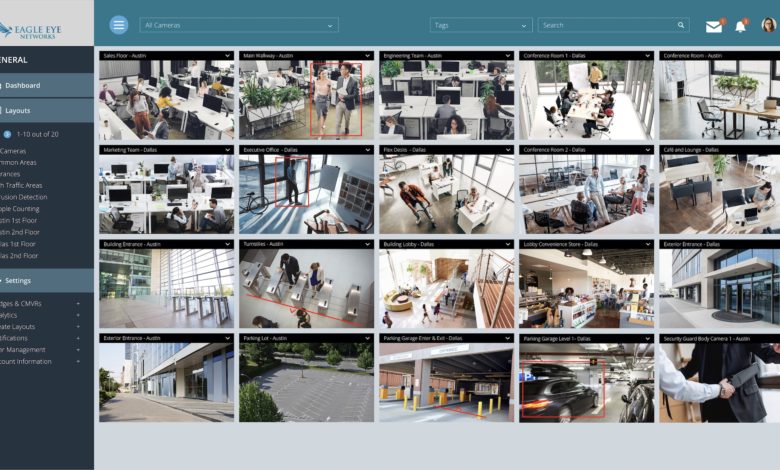
Video surveillance continues to be widely adopted across many industries, not only for security purposes but more recently to assist in increasing business efficiency. The problem is, many of today’s legacy video surveillance systems require monotonous monitoring or a meticulous manual review after each triggered event to extract useful information. This places serious limitations on the effectiveness of the technology and the ability of organisations to more broadly apply it to real-world security, safety and business challenges.
Traditional on-premises infrastructure has also become a significant limiting factor in the development of the video surveillance industry. However, the development of cloud-based video surveillance applications, powered by Artificial Intelligence technologies is disrupting established approaches and transforming systems from simple motion-based alerting devices to unified proactive and preventive solutions.
For example, AI technologies can automatically filter out many of the common performance limitations of existing solutions, ranging from bad weather, changes in light levels and obscured images and even the motion of a person versus an animal. AI also eliminates the need for constant attendant monitoring during off-hours, precisely detecting human activity, and sending only relevant alerts for intervention.
These capabilities not only improve analysis speed and accuracy of the surveillance process, but they allow the technology to be applied to a much wider range of operational, efficiency and safety use cases than traditional CCTV. The scope of AI-enabled applications is growing all the time and includes options such as monitoring employee arrivals, the presence of intruders, vehicle detection, moisture detection on floors and other smart features such as loitering and mask detection. AI-powered surveillance has also been applied to help organisations and their teams keep within current COVID-19 compliance guidelines.
When AI technologies are applied to video surveillance systems, users can also significantly broaden their use of intelligent analytics to monitor and enhance existing operational processes or bring innovative new capabilities into their businesses. For instance, retailers can use AI-powered video systems to measure the impact of marketing campaigns on store traffic, identify trends and understand customer preferences. Think of it as the in-store equivalent of how retail websites use analytics to track the online customer journey – it offers them a powerful way to understand the effectiveness of their promotional campaigns and their wider in-store strategy.
It can also be applied to retail security, and by integrating AI-powered surveillance with POS technologies, any suspicious transactions can be immediately flagged and monitored for review and potential follow-up action. Retail represents just one example of the markets adopting the technology to increase security and efficiency, with banking, healthcare, government, hospitality and education powering significant growth. As a result, global revenue from AI-powered surveillance analytic technologies is set to increase from $1.1 billion in 2018 to $4.5 billion in 2025, according to research from Omdia.
AI and Cloud – Converging Technologies Driving the Wider Adoption of Video Surveillance
Cloud infrastructure plays an important role in enabling surveillance systems to benefit from the advantages delivered by AI. Services hosted in the cloud are typically cheaper, more reliable and secure than the on-premises infrastructure often required to deliver and support legacy technologies. Cloud-based solutions are also much easier to scale – especially at short notice, and by offering users an open platform, organisations can implement additional third-party technologies that suit their specific needs.
This level of flexibility is pivotal to the wider application of AI in the video surveillance market. Outsourcing the platform and infrastructure to a specialist third party opens up a portfolio of services, allowing users to cherry-pick AI-powered functions that most precisely meet their needs. Indeed, the impact of the COVID-19 pandemic has further increased the reliance organisations are placing on video surveillance technologies, driven by cloud-enabled remote access and monitoring capabilities.
The growing application of AI technologies is rapidly transforming the video surveillance market. Inefficient legacy systems are being replaced by intelligent applications that significantly enhance the value of video surveillance across the board. As a result, it will increasingly deliver a business impact alongside its long-established role as a vital safety and security tool, driven by the innovation at the heart of AI.





